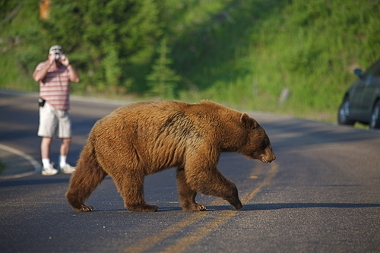In addition to the common volcanoes, which are naturally dangerous and which, when active, cause profound changes in terrestrial space, there are the so-called supervolcanoes, whose eruption transforms not only its surroundings, but also continental areas or even the planet as a whole, influencing the functioning of climate and living beings in proportions unimaginable. Along with asteroids, they constitute the greatest natural threat to humanity.
The most well-known supervolcano today is that of yellowstone, located in the United States, in the states of Wyoming, Montana and Idaho. Its shape does not follow the pattern of any volcano, with a mountainous formation in the shape of a “cone”. In fact, its surface forms a covering over an area of the Earth's crust composed of an immense pool of magma – called the boiler. Scientists recently discovered that the size of this boiler is two and a half times larger than if imagined, 55 km deep, containing about 300 km³ of molten rock in an area of approximately 2700 km².
The last eruption of the Yellowstone volcano happened about 600,000 years ago, according to estimates. The studies carried out already know of two more activities prior to this one, which took place 1.3 and 2.1 million years ago, respectively. Thus, many geologists claim that the seismic activities of this volcano present a rhythm 700,000 years on average, although there is still no conclusive data to prove this theory.
If Yellowstone were to erupt now, it would throw its ashes so high they would be suspended in the atmosphere for several years, causing an average reduction in temperatures of about 10°C across the planet, due to the blocking of the sun's rays by this "cloud of ashes”. Furthermore, most of the North American continent is likely to become virtually uninhabitable.
Despite all this risk, the location is one of the main tourist attractions in the United States. Yellowstone National Park – founded in 1872 and therefore the oldest in the world – attracts around three million tourists a year, featuring numerous natural beauties, such as the numerous geysers, waterfalls and geothermal pools in the region, as well as fauna and flora lush. The main visiting season takes place between June and September.

Tourist photographing a bear in Yellowstone National Park
Are there risks of Yellowstone erupting?
Contrary to popular belief, the Yellowstone supervolcano is not “asleep”, but in full activity. However, the intervals between its eruptions, considered brief in geological terms, are very long in historical terms. There is no consensus on when its next eruption will be, but it is estimated that it will occur 100,000 years from now.
Anyway, scientists are looking to find ways to predict an eventual occurrence, since studies have pointed out that magma should remain under pressure for almost a full decade to, finally, explode. However, in addition to the build-up of internal pressure, another way to "wake up the giant" would be through some external factor, such as earthquakes. There is no evidence that human activity exerts any kind of influence in this case.
By Rodolfo Alves Pena
Graduated in Geography

